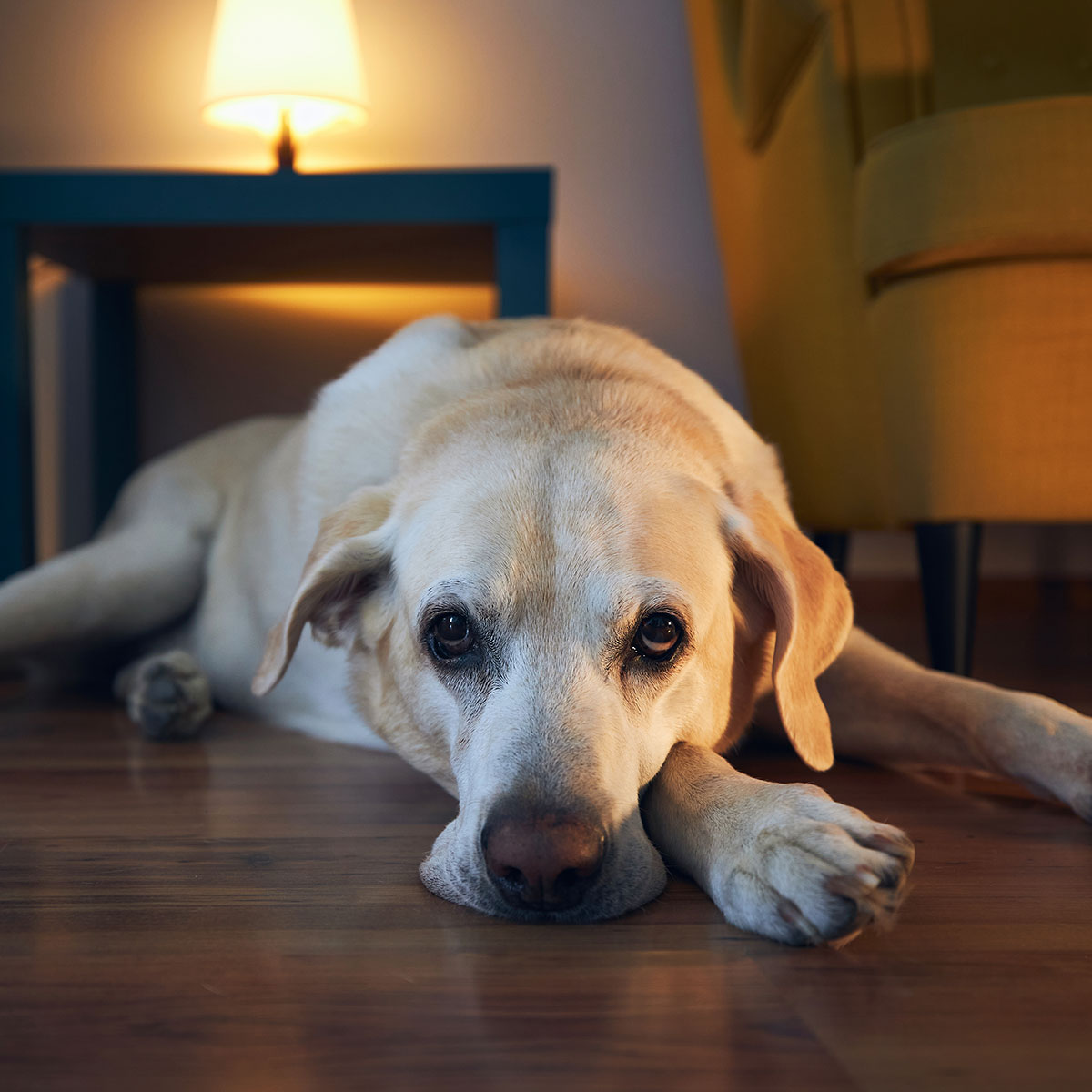As our beloved dogs age, we often notice them slowing down, struggling to stand or slipping on hardwood, tile or laminate floors. If your senior pup has ever lost their footing while walking inside, you’re not alone. This is a common issue for aging dogs. But why does this happen and how can you help?
In this guide, we’ll explore the key reasons why senior dogs struggle with slippery floors and provide actionable solutions to help them regain their confidence and mobility.
Why Do Senior Dogs Slip on Slippery Floors?
Several age-related factors contribute to why older dogs have trouble walking on smooth surfaces.

1. Loss of Muscle Mass and Strength
As dogs age, they naturally experience muscle atrophy, particularly in their hind legs. This muscle weakness makes it harder for them to maintain traction and stability, leading to slipping and falling on hard floors.
2. Arthritis and Joint Pain
Arthritis affects many senior dogs, causing joint stiffness, inflammation and pain. This discomfort can make it difficult for them to lift their paws properly or balance on slick surfaces, increasing their risk of falling.
3. Reduced Paw Pad Traction
A dog’s paw pads provide natural grip, but over time they can become dry, cracked or smooth, reducing traction. Senior dogs often have worn-down paw pads, making it harder for them to grip slippery floors.
4. Neurological and Balance Issues
Older dogs may develop neurological conditions such as canine vestibular disease, which affects their balance and coordination. This can cause wobbliness, dizziness and difficulty walking on hard floors.
5. Long Nails and Overgrown Fur Between Pads
Untrimmed nails and excessive fur between paw pads can prevent proper contact with the floor, reducing traction and making slips more likely. Regular paw care is crucial to helping senior dogs maintain stability.
How to Help Senior Dogs Walk Safely on Slippery Floors
Fortunately, there are several ways to improve traction and mobility for your senior dog at home.
1. Use Anti-Slip Paw Grips or Socks
One of the most effective solutions is to use anti-slip paw grips or dog traction socks like those from Steady Paws. These provide extra grip and prevent slipping, helping your dog move more confidently on smooth surfaces.
2. Add Area Rugs or Runners
Strategically placing non-slip rugs or rubber-backed runners in high-traffic areas can create safe pathways for your dog to walk on. Focus on areas like hallways, around food and water bowls and near their bed.
3. Maintain Paw Pad Health
4. Keep Nails Trimmed
Long nails can force a dog’s toes into an unnatural position, affecting their ability to grip the floor properly. Regular nail trims help maintain proper paw function and reduce slipping.
5. Improve Joint Health with Supplements
If arthritis or joint pain is contributing to mobility issues, consider giving your senior dog:
6. Strengthen Their Muscles with Gentle Exercise
Maintaining muscle strength helps with stability and balance. Low-impact activities include:
7. Consider Orthopedic Dog Beds
An orthopedic dog bed provides extra comfort and joint support, helping your senior pup get up more easily without slipping. Look for memory foam beds with non-slip bottoms.
8. Use Pet-Safe Floor Grip Sprays
Some pet-safe floor sprays create a slightly tacky surface that improves traction without damaging your flooring. This can be useful in high-slip areas like kitchens and living rooms.
9. Install Stair Treads for Extra Grip
If your home has stairs, installing non-slip stair treads can prevent accidents and make it easier for your dog to climb up and down safely.
10. Consult Your Veterinarian for Underlying Issues
If your senior dog’s slipping is sudden or severe, consult your veterinarian. They can check for underlying medical conditions such as arthritis, nerve issues or vision problems that may require additional treatment.
Watching your senior dog struggle on slippery floors can be concerning, but with the right adjustments, you can significantly improve their stability and comfort.
From using anti-slip paw grips and rugs to maintaining proper paw pad care and joint health, small changes can make a big difference in helping your older dog regain confidence and mobility at home.
By implementing these tips, you’ll not only reduce the risk of slips and falls but also help your furry companion enjoy their golden years with ease.
Related Posts
Helping Your Senior Dog Feel Brave Again After a Slip or Fall
Gentle Behavior Tweaks That Make Life Easier for Aging Dogs and Their Humans
How to Help Your Senior Dog Navigate Stairs Without Stress

